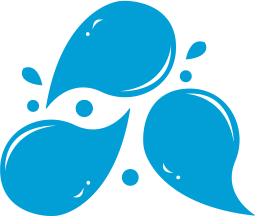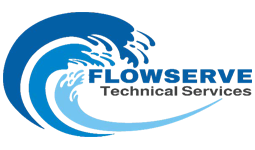Discover Spinanga App – Your Ultimate Tool for Enhanced Productivity
Table of Contents
- Discover Spinanga App – Your Ultimate Tool for Enhanced Productivity
- Unleashing the Power of Task Management with Spinanga
- How to Create and Organize Tasks Seamlessly
- Utilizing Labels and Priorities for Better Focus
- Integrating Spinanga with Your Daily Routines
- Setting Up Daily Reminders to Stay on Track
Discover Spinanga App – Your Ultimate Tool for Enhanced Productivity
In a world brimming with distractions, finding ways to streamline tasks and optimize time management is essential. Enter a dynamic software designed to revolutionize daily Spinanga workflows and help users stay focused. This application introduces an assortment of features tailored to address common efficiency challenges faced by professionals across various sectors.
One standout characteristic is its intelligent task organization system, which allows individuals to categorize assignments based on priority and deadlines. By utilizing such a system, users can eliminate the overwhelming feeling of juggling multiple responsibilities. Additionally, real-time collaboration capabilities facilitate seamless communication among team members, ensuring everyone remains aligned with project goals.
Moreover, the integration of analytics tools provides valuable insights into performance patterns. This enables users to identify peak productivity hours and optimize their schedules accordingly. By harnessing these data-driven features, individuals can make informed decisions about their work habits, ultimately enhancing their output without sacrificing quality.
Furthermore, the art of setting attainable objectives becomes significantly easier with built-in motivational prompts and reminders. This unique approach encourages users to maintain momentum, nurturing a proactive mindset. With dedicated resources at their fingertips, the journey towards achieving daily ambitions transforms from a daunting challenge into an exciting endeavor.
Unleashing the Power of Task Management with Spinanga
Effective organization of tasks can significantly enhance workflow and minimize stress. A robust platform enables users to prioritize assignments, track progress, and manage deadlines seamlessly. By utilizing a structured approach to task management, individuals can ensure that projects remain on schedule and responsibilities are clear.
One of the standout features of this solution is the ability to categorize tasks based on urgency and complexity. Implementing a system where tasks are divided into distinct categories fosters clarity and allows users to focus on what truly matters. Utilizing methods like the Eisenhower Matrix, where tasks are sorted into four quadrants, can improve decision-making on what to tackle first.
Notifications play a crucial role in staying on top of commitments. A well-designed reminder system keeps tasks at the forefront, preventing critical deadlines from slipping through the cracks. Setting realistic timelines and breaking down larger projects into smaller, actionable steps further aids in maintaining momentum and accountability.
Collaboration is another vital aspect of task management. Implementing shared workspaces facilitates teamwork by allowing users to delegate tasks easily, monitor contributions, and make adjustments in real-time. Emphasizing open communication channels within the platform ensures transparency and fosters a cooperative environment.
Data analytics features can provide significant insights into work habits. Analyzing patterns in task completion can help identify strengths and weaknesses, allowing users to optimize their strategies over time. Regular assessments based on performance metrics can drive continuous improvement.
Integrating tools for time tracking can further enhance efficiency. By recording the time spent on various tasks, users gain clarity on where they may need to adjust their focus or streamline approach. Employing the Pomodoro Technique within this framework can lead to improved concentration and reduced burnout rates.
Incorporating visual elements, such as Kanban boards, provides an intuitive layout that helps in managing tasks effectively. This visualization allows users to see their workflow at a glance and assists in identifying bottlenecks quickly. Color-coded tasks based on priority levels can also enhance comprehension and urgency at a glance.
Finally, regularly revisiting and adjusting strategies is key to sustaining high levels of efficiency over time. Conducting weekly reviews allows individuals to reflect on accomplishments and refocus on upcoming challenges. This practice encourages an adaptive mindset and promotes long-term growth.
How to Create and Organize Tasks Seamlessly
Effective task management requires a combination of clear strategies and efficient tools. Follow these steps to streamline the creation and organization of your tasks:
- Identify Your Goals
Before diving into task creation, clarify your objectives. Determine what needs to be achieved within specific timeframes.
- Create Categories
Structure tasks by grouping related items under different categories. This approach enhances focus and minimizes overwhelm.
- Work Projects
- Personal Development
- Household Chores
- Social Commitments
- Prioritize Tasks
Assign priority levels to each task using a system, such as high, medium, and low. This helps you focus on what matters most.
- Set Deadlines
Attach realistic deadlines to tasks. Having a timeline fosters accountability and encourages progress.
- Break Down Larger Tasks
For substantial projects, divide them into smaller, actionable steps. Each mini-task should be manageable and easy to track.
- Utilize Reminders
Implement reminders or alerts for important deadlines or tasks. Regular notifications help maintain awareness and commitment.
- Review and Adjust
Consistently monitor your task list. Regularly evaluate progress, adjust priorities if necessary, and scrap tasks that are no longer relevant.
By following these outlined principles, you can optimize your task management process, leading to a productive workflow and a more organized approach to achieving your goals.
Utilizing Labels and Priorities for Better Focus
Implementing a systematic approach to task organization can significantly enhance concentration and efficiency. A practical method involves employing labels to categorize tasks based on their nature, such as “Work,” “Personal,” or “Urgent.” This clarity allows individuals to swiftly identify which category requires immediate attention.
Color coding labels can further streamline this process. Assign distinct colors to each category; for instance, using red for urgent tasks and blue for personal projects enhances visual organization. This tactic assists in reducing cognitive load, enabling quick decision-making without unnecessary deliberation.
Another pivotal aspect is the assignment of priorities to tasks. Establishing a ranking system–such as high, medium, and low priority–ensures that critical assignments are addressed promptly. Focus on completing high-priority tasks first, as this significantly reduces stress levels and fosters a sense of achievement, thereby motivating continued progress.
Regularly reviewing tasks and their corresponding labels prevents stagnation. Consider implementing weekly or bi-weekly evaluations to reassess priorities. This adaptability ensures that shifting circumstances or new responsibilities are accounted for, maintaining relevance and efficiency in task management.
Utilizing tags in combination with deadlines further sharpens focus. When tasks are labeled and prioritized with clear timeframes, procrastination is minimized. Having a visual representation of upcoming deadlines motivates timely completion and encourages proactive engagement with assignments.
Lastly, integrating labels and priorities within a digital framework allows for seamless adjustments. Utilize available features to automatically sort or filter tasks based on your customized parameters, creating a streamlined workflow that promotes ongoing focus and efficiency.
Integrating Spinanga with Your Daily Routines
Incorporating this innovative platform into everyday tasks can lead to significant transformations in workflow and efficiency. Begin by customizing the dashboard according to your priorities. By placing frequently used features at the forefront, you can reduce time spent searching for essential tools.
Utilize reminders for deadlines and meetings. Setting arbitrary alerts at regular intervals ensures tasks remain visible, hence minimizing the chances of forgetting crucial commitments. This proactive approach cultivates a habit of accountability.
Leverage collaborative functions to enhance team synergy. Creating shared projects allows team members to contribute in real-time, fostering communication and reducing the time wasted on back-and-forth emails. Establish clear roles and responsibilities within these shared assignments to streamline the process further.
Adopt the habit of blocking out specific periods in your schedule for uninterrupted focus. Use this versatile solution’s timer to create work sprints–short, dedicated bursts of productivity. Following each sprint, allocate brief breaks to recharge, maintaining high levels of creativity and motivation.
Track progress systematically by reviewing completed tasks at the end of each day or week. This retrospective can help identify productive patterns and areas needing improvement, allowing for continuous optimization of efforts.
Incorporate learning elements by accessing resources and tools within the platform that support skill development. Setting aside time weekly to focus on personal growth not only enriches your capabilities but also contributes to overall job satisfaction.
Finally, ensure to sync the platform with existing calendars and applications. This integration creates a cohesive environment, where tasks and obligations from various sources come together seamlessly, simplifying the management of your day-to-day responsibilities.
Setting Up Daily Reminders to Stay on Track
Creating daily reminders can significantly improve focus and organization. Begin by analyzing your schedule and identifying key tasks that require attention. Establishing a routine helps in building consistency; consider setting reminders at the same time each day.
Select specific and actionable goals for your reminders. Instead of vague notes like “work on project,” specify “complete research for project X by 3 PM.” This clarity makes it easier to stay committed and measure progress.
Utilize diverse methods for notifications. Choose a mix of alerts, such as pop-ups, emails, or SMS, to suit different contexts. For instance, a quiet notification during meetings can ensure minimal distraction, while an email reminder might be more effective for long-term tasks.
Keep reminders visible. Use widgets or sticky notes on your device or workspace to maintain focus on critical items throughout the day. This visual cue reinforces accountability and keeps tasks at the forefront of your mind.
Adjust frequency based on urgency and importance. For high-priority activities, set multiple reminders throughout the day. Less critical tasks may only need a single prompt. This tailored approach ensures you manage your time without becoming overwhelmed.
Regularly review and update your reminders. As tasks shift or new responsibilities arise, adapt your alerts to reflect current priorities. This practice ensures that your system remains relevant and effective in guiding your daily activities.
Finally, assess the effectiveness of your reminder strategy. At the end of each week, reflect on what worked and what didn’t. Use this information to refine your approach, ensuring it evolves alongside your requirements and helps maintain your pace effectively.


